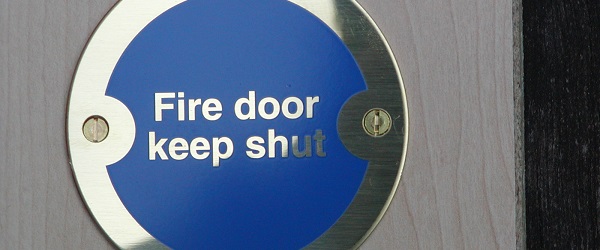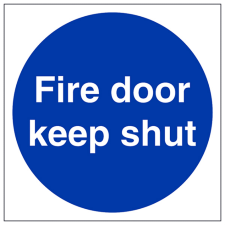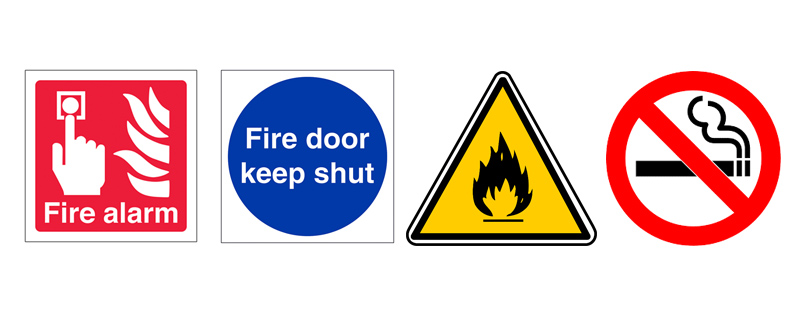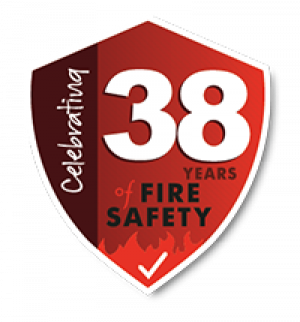Why Fire Doors Are Labelled 'Keep Shut'
12th May 2017

Do you know why fire doors are labelled 'keep shut'?
It's not just because they're heavy and a pain to open when leaving a room. The truth is, if a fire starts, the last thing you want is for the door to swing open and let all the heat and smoke out. By keeping the door closed, you're buying yourself more time to get out safely. So next time you see one of these signs, be sure to listen!
Throughout your everyday life, you will walk through a number of fire doors - at work, in public buildings, shops etc. If you look closely, you’ll notice that a vast majority of these doors are labelled ‘Keep shut”.
Whilst the safe passage of evacuees through the building is a crucial part of a fire safety plan, fire doors are much easier to open to evacuate a building than they are to close in the event of a fire. Fire doors are a crucial part of the fire protection method called ‘compartmentation’.
What is compartmentation?
Compartmentation is one of the primary methods of passive fire protection within buildings.
A building is divided into individual ‘compartments’ or ‘cells’, which are designed to contain a fire or resist a fire for a defined period of time (much longer than a building without protection). This is used for a number of different reasons, but the most common reason is to provide protection to the ‘means of escape’.
For instance, stairways (a common means of escape) are compartmented to protect the escape route for evacuation and prevent them from being consumed by flames or filled with smoke before a building is completely evacuated.
Compartmentation consists of constructing walls with fire resistant materials and using compartmentation practices, for instance, compartment walls (a physical space between rooms for instance), thermal insulation, and as mentioned fire doors.

Fire Doors in compartmentation
Fire doors sold in the UK are tested using procedures outlined in BS 476-22.1987 or BS EN 1634-1:2014, including the doorframe, latches, hitches etc.
The test involves subjecting the door to fire conditions and testing its performance. The resulting information gives the fire door its ‘FD’ rating, usually FD30 or FD60, referring to the number of minutes that the door maintained integrity and stability and subsequently stopped the fire from spreading.
In addition to simply resisting fire and heat, a fire door is specially designed with intumescent (heat expanding) strips along its edges. These strips, when exposed to heat, expand up to 10 times their original thickness and seal the door frame. This prevents heat and smoke from forcing its way through the gaps and reaching the other side of the compartment door. This has the additional benefit of reducing the ways that oxygen can enter the room, starving the fire of oxygen and slowing its growth.
A fire door’s job is to remove the ‘weak spot’ in the integrity of the fire compartment. A standard door will withstand an advanced building fire for only a few minutes and allow the fire (and dangerous smoke) to spread across the building rapidly, becoming out of hand. With this in mind, a normal door is about as protective during a fire as no door - and likewise for an open fire door or an incorrectly installed fire door.
Automatically closing fire doors
In some buildings, such as hospitals and schools, it’s simply not practical to have each compartment closed all of the time. Hospitals require patients, equipment and large numbers of personnel to be moved freely between compartments. It would simply not be practical to keep a fire door closed in this scenario.
However, compartmentation is equally important in these buildings, so how is compartmentation handled?
These buildings employ magnetic ‘door holds’. Doors are held open using electro-magnets throughout the day and in the event of a fire, power loss or an alarm the electro-magnet is released and all of the fire doors in the building (or zone of alarm) are closed automatically to compartmentalize the fire. This method is employed globally in hospitals, schools and similar buildings for its simplicity and ease of use and, most importantly, effectiveness.



